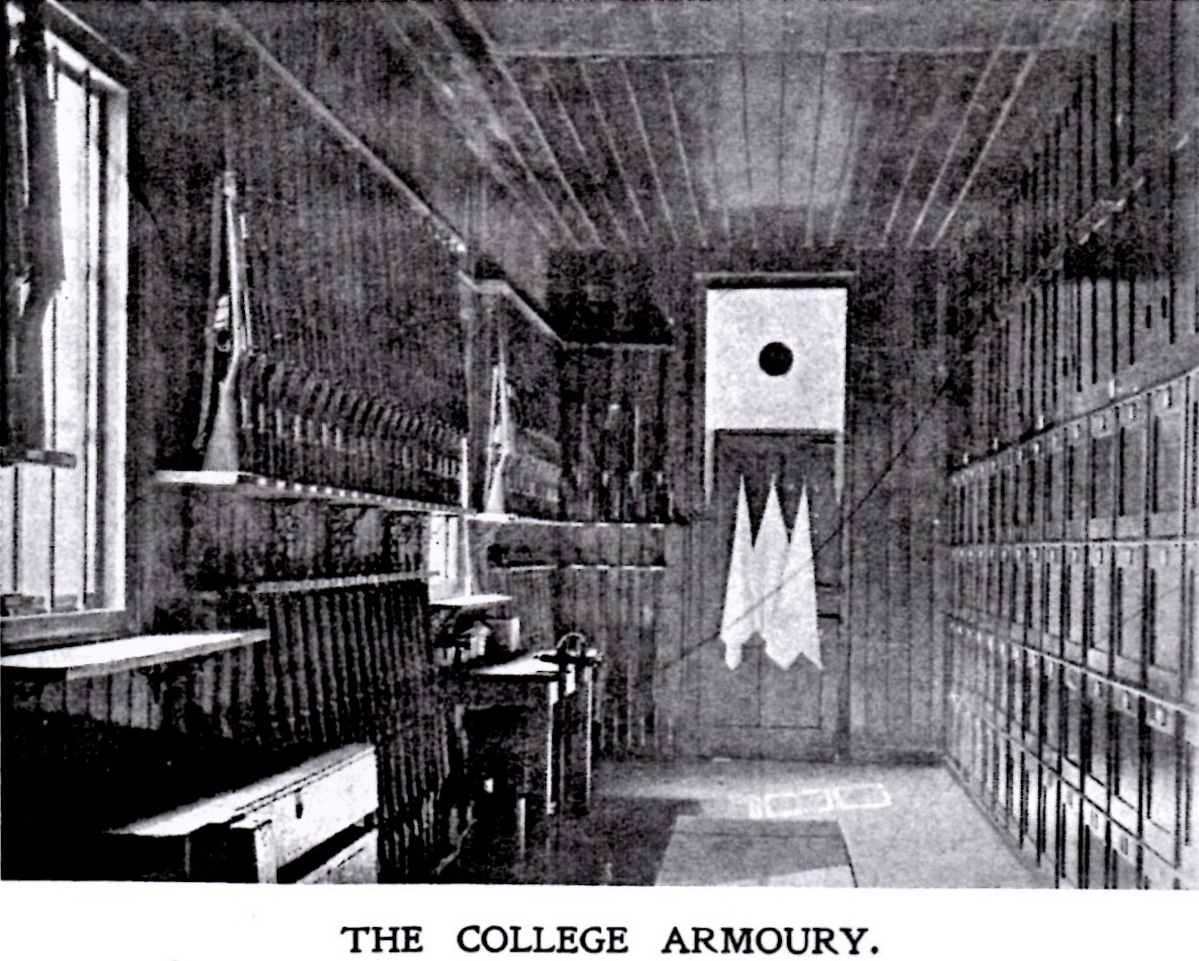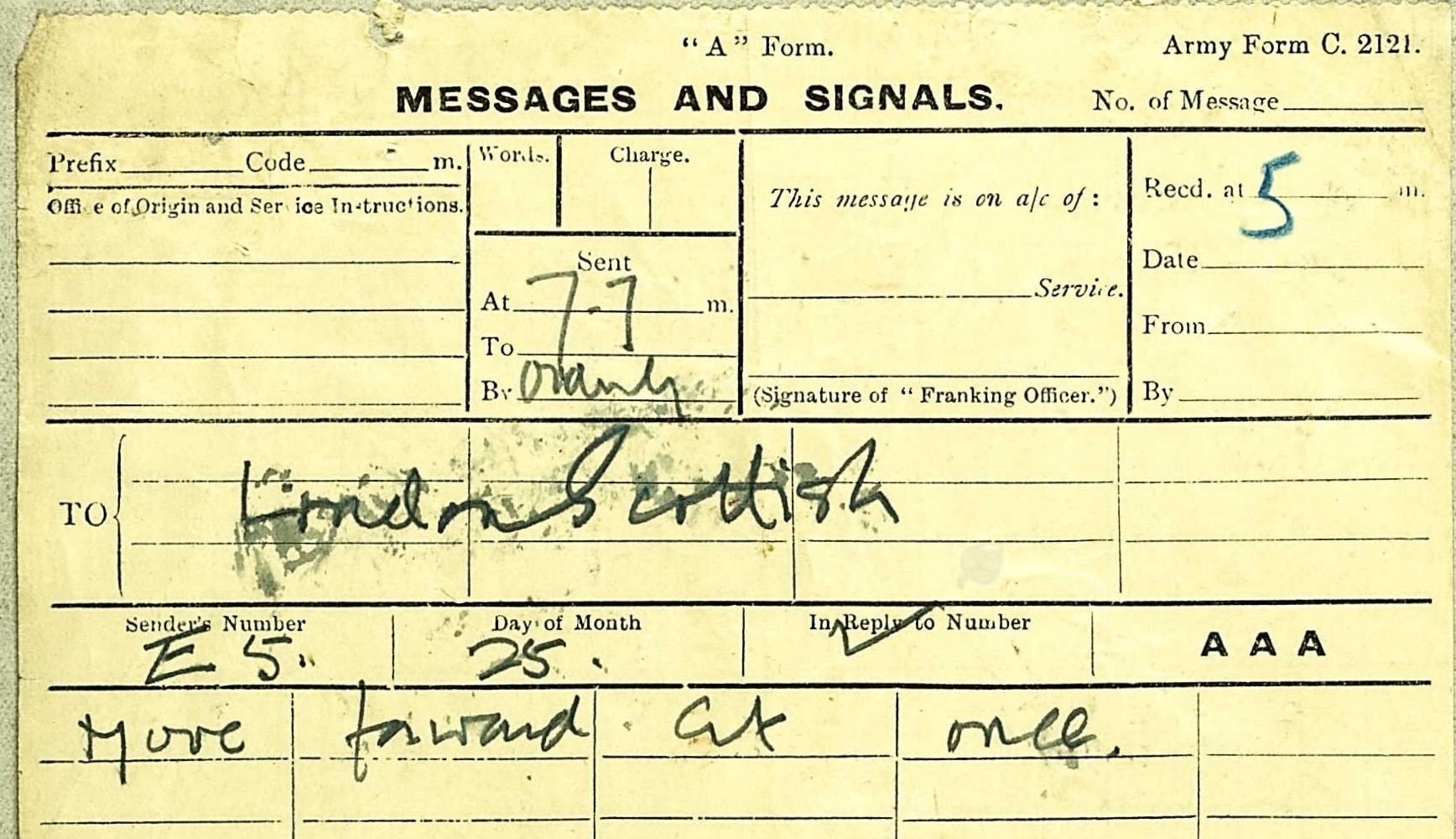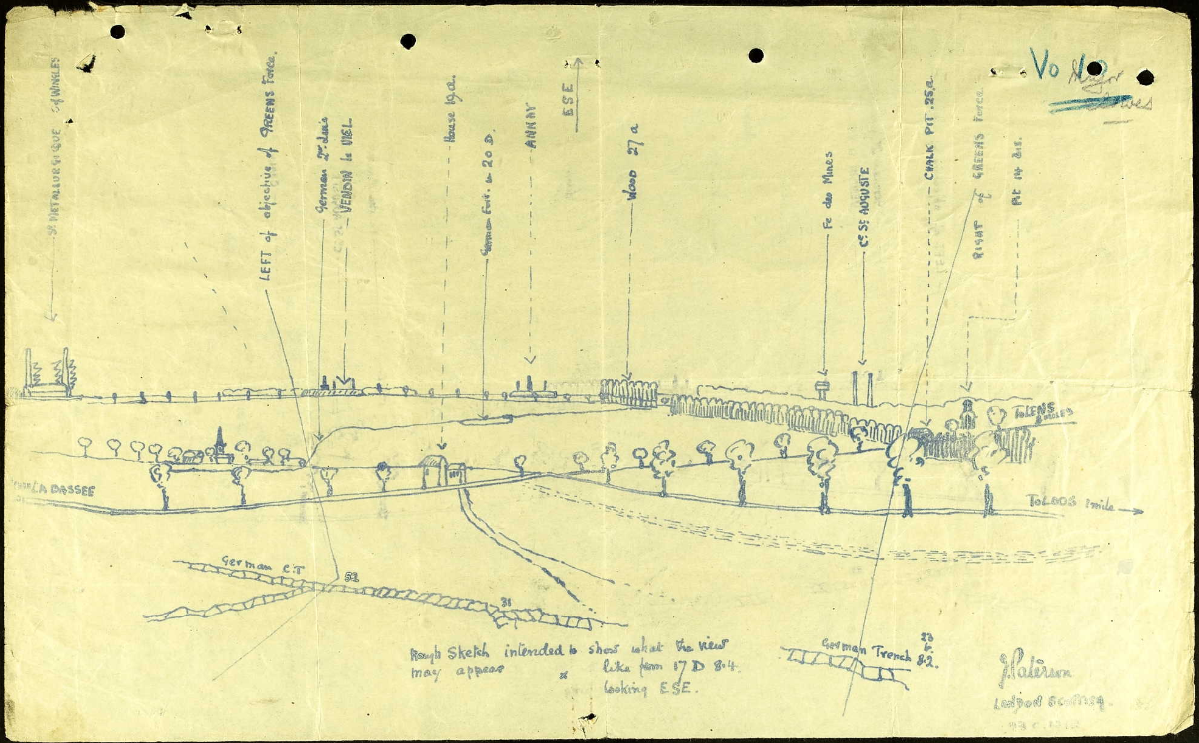Henry Eason
9th June 1892 – 13th October 1915
Sargeant Henry Eason, 1/14th London Regiment (London Scottish) C Company, Regimental Number 3103, was killed in action in France on 13th October, 1915.
His Family
Henry’s parents, Henry and Phoebe Maria (née Dickinson) worked as an engineer and dressmaker, and came from Gravesend (Milton) and Bow (London, was Middlesex then). They were married at St Alphege, 1 Greenwich on 21st June, 1890 at the ages of 29 and 28.
Almost two years into their marriage, Henry was born on 9th June, 1892. He was to be followed by two brothers: Ernest John, born in 1894, and Percy, in 1899. All births were in Plumstead, Southeast London (then Kent), at the family home although it does seem that the family had undocumented ties with Greenwich as Ernest was baptised at St. Alphege’s, as was Henry on July 17th, 1892.
The family moved house a number of times 2 but were always to be found in Plumstead. Henry Senior’s work as an engineer, or ‘Steam Engine Fitter’ was at the Royal Arsenal at Woolwich; 3 the Arsenal adjoins Plumstead.
As the boys grew up, Percy was to follow his father’s footsteps and was an engineering apprentice. 4 His brother Ernest John is recorded in 1911 as a ‘Railway Clerk (unemployed)’. Henry’s occupation is seen in the Census of 1911 where he is described as a ’Pupil Teacher’ at the age of 18.
Henry’s school—and presumably that of his brothers—was Bloomfield Road Higher Elementary School, South Woolwich. He had stayed in school after the usual leaving age and would have been paid a small salary to work alongside a class teacher as a pupil teacher, learning the trade. His later Student Record on entry to college gives his pupil teacher school as the Senior Mixed School, Plumstead. This source also tells us that he finished his time there (1911) as an assistant teacher, though this contradicts the job title of pupil teacher from the census. As a pupil teacher, the school headteacher would have given him further training and lessons before or after the school day for at least one and a half hours. We also know that Henry would have received training on a day-release and evening class basis, at a Pupil Teacher Training Centre: he had several qualifications granted by one of these institutions. His main examination pass, however, was the Preliminary Examination for the Certificate, which he gained in 1911.
Introduced in 1907, the examination was in two parts; compulsory subjects in Part 1 needed to be passed before continuing onto the second part. In Part 2 there were further compulsory subjects and a wider range of other subjects from which the student could choose three options, from: Elementary Science, Elementary Mathematics, and Foreign Languages. Henry presumably took these challenges in his stride and, in the September of 1911, he left home for two years of study. There is a separate article on Teaching and Training here.
Student Life
Winchester Training College, 1911-1913
Henry’s passage through his student days did not go unrecorded in the College student publication, The Wintonian. This carried news articles about the extra-curricular activities of the students, principally of sports and social life.
Under the heading of ‘Swimming Notes’ we read, ‘Henry Eason was awarded a swimming medal and certificate.’ There was a lot of football and cricket played but his name isn’t mentioned. However, in ‘Harriers Notes’ it is recorded that ‘the first two home were Wotton and Eason, who arrived about one minute after the hares.’
The College as Henry would have known it. Hand-coloured photograph, early 20th Century.
Henry’s academic work showed particular strengths in Science (Grade A), Drawing (B) and Physical Training (B). He also gained a Class I in the Archbishops’ Examinations in Religious Knowledge.
Very much part of student life was the Hampshire Regiment. Until 1908 it was expected that every student would become part of the Volunteer Company. The link with the College went back to 1859 and in 1875 the Company was officially called ‘The Winchester Diocesan Training College Corps’ or the ‘24th Hants Rifle Corps’, or simply the ‘Volunteer Force’. The College had a full armory for rifles and ammunition, and a small-bore shooting range.5
This relationship and expectation may seem odd from a 21st Century perspective but, at that time, it was very much in keeping with the militarised mindset of the British Empire, and the philosophical movement of ‘muscular Christianity’.6
By Henry’s time at College, not all students were part of this. For an explanation of this change, we turn to Martial Rose’s history of the College:
In 1908 the Territorial Force was formed and the Volunteer Force ceased to exist. The College Company became B Company of the 4th Territorial Battalion of the Hampshire Regiment. From now on, students at the College would no longer be enrolled, instead they would be enlisted. This changed the nature of the Force and not all students joined. The men were subject to a more professional system which included military discipline and more thorough training.
The Wintonian therefore included news of matters military and we read in ‘Territorial Notes’ that ‘the best Junior shot is Pte Eason, who made an aggregate of 74 points: the second best is Pte Burt with 72.’ This would have later significance.
After leaving College, Henry secured a position teaching at St. Stephen’s Church of England School, in Lewisham, just west of Greenwich.
Leaving college did not mean losing the friendships that had been built there. Many students held treasured memories of their time. The Winton Club was a society for former students, founded in 1874, and reunions took place under this banner. For students distant from Winchester, geographical sub-groups of the Club were founded. The Wintonian records, ‘On Friday March 13th, the 11-13 men resident in and around London held their first reunion Those present were Burt, Dobson, Eason, Hotten, Moore A R, Wootton, and Wilson.’ All of those named would lose their lives in the war.
Henry’s new career as a Certificated Teacher was not to last long: within his first year of teaching, war was declared.
A Family at War
It wasn’t only Henry who would have direct involvement in the war. Percy, an engineering apprentice by trade, joined the Royal Engineers.7 Middle brother, Ernest, also joined the Army. Although we have no military records of him, he does have a military grave in Plumstead Cemetery8 and the headstone tells us that he became a Driver in the Royal Army Service Corps (Regimental Number 1742).
Most of Henry’s Army papers were amongst those destroyed in the Blitz and so we have to try to piece together his military history from what remains and other sources.
He joined the 1/14th Battalion London Regiment (‘London Scottish’) in August 1914.9 After training, he was posted to France and landed there, according to his Medal Index Card, on 24th November, 1914. The Battalion had been in France since September 16th. The War Diary says, ‘Nov. 28th A draft of 5 officers and 187 other ranks arrived from England.’
It is often difficult to imagine what time at the front consisted of: how was time spent? The following is a thumbnail sketch of Henry’s war, taken from the handwritten daily Battalion War Diary.
He had joined the rest of the fighting unit at Hazebrouck, near the French–Beligian border, 20 miles southwest of Ypres. On December 3rd he and the troops of the 14th London Scottish were inspected by His Majesty George V. On 21st December, the unit had moved 16 miles southeast to Givenchy/Cuinchy, just outside Lens where Henry would enter front line trenches for the first time. They were to be in this general area for the rest of Henry’s war, moving in and out of the front line to relieve other units before they were in turn relieved. There were minor engagements and light casualties through to the end of April, but nothing on the scale of ‘going over the top’.
At the outset of May, there was an attack made at Rue de Bois—again in the same area—with light casualties but other sections suffered very heavy losses. Throughout the rest of May and the first half of June Henry would have played a waiting game: his Battalion was in reserve, ready to move up and provide reinforcements should the need arise.
On June 13th the men were moved the short distance to La Bassé front lines. The War Diary at this point makes a comment about the asymmetry of the exchanges between the opposing sides: ‘The peculiarities of the ground here are the extraordinary closeness of the trenches and the mining and the counter-mining that have gone on between them, resulting in huge craters in the ground intervening, possession of which is struggled for by each side, impeded by the rifle—and hand-grenades thrown by the other.’ Accurate rifle-fire was an area that Henry knew something about and it should be no surprise to learn after having excelled in shooting at College, that he was selected as a sniper. His old Headmaster from St. Stephen’s School, in a letter to the College Principal, said that he ‘was a good shot, and was used as a sniper.’
Through the second half of June and on into September, there were more cycles of front-line to billets to Reserve. On September 25th, things would change and Henry would have his first experience of what it was to go over the top.
There was to be a major offensive at Vermelles, just to the south, with C (Henry’s) and D Companies as front-line reserves. At 6.57am the Battalion was given a message ‘London Scottish. Don’t move till you receive orders.’ Then, at 7.22am, ‘London Scottish. Move forward at once.’
They were expecting to advance towards an unoccupied German trench but instead faced a hail of machine-gun fire and had to take cover. Pinned down, they received a further order at 12.45pm to attack the trenches and this they did, with B and C Companies achieving their objectives by short rushes supported by machine-gun fire. The 600 Germans in the trenches, seeing the attack, ‘got up and surrendered’.
A few days of re-organising and re-fitting were followed by a move to new front-line trenches on October 5th. By the 10th, food and water were short, trenches very shallow, and attempts to improve them were arduous as Battalion numbers were low. The men were then told that they were to attack the German trenches in a few days.
Sketch of the attack area, made before the action. 14th London Scottish were to attack the centre Green Force’ area.
October 13th was the appointed day and ‘the assault was delivered at 2.00p.m.’ by A and D Company under the cover of smoke bombs ‘but owing to the strong wind, the smoke afforded very little protection.’ The men were attacking the main cross roads (centre, in the sketch map) and had to cross the La Bassée – Loos road. The German forces were dug in at the far side of the road and the London Scottish were cut down before reaching it, only one officer managing to cross. He reconnoitred the ground and found that the Germain wire was uncut. A plan to cut the wire by hand under cover of gas bombs could not go ahead due to the wind direction and so the men stayed put until dark. Under cover of darkness, Henry’s C Company then moved in to relieve A and D Companies, and two Platoons of B Company who had gone to assist them. In the night, men from other Battalions came up to put defensive wire entanglements in place and improve trenches. ‘At 1.30am orders were received to abandon this work, as the Battalion would be shortly relieved by the 15th County of London Regt. This was accomplished by 3.0 a.m. and the Regiment withdrew to the Support Line. Casualties Estimated, Officers 3, O.R. 100.’
Though the detail is missing from the Diary, Henry was one of the 100 men who had fallen, though later details suggest it was either before or after the rush to cross the road. There must have been informal news of his death that reached home, perhaps in letters from an officer or fellow soldiers, for The Wintonian reports that he met his death by the actions of an opposite number: he ‘was killed by a sniper’. The London County Council Record of Service adds that ‘On 13th October Sergt. Henry Eason (14th Lond., Educ.) was killed while reconnoitring.’
His war was at an end.
His parents, Henry and Phoebe, had a second blow awaiting them. Just over six months later, his brother Ernest, a Driver in the Royal Army Service Corps, was dead. He died on 28th April, 1916, age 23, and was buried on 3rd May. We do not know if his death was by illness, injury or accident.
Henry is remembered on the Loos Memorial, Pas-de-Calais, France. The location of his grave is unknown.
Researcher and Author: John Vickers
Footnotes
[1] Now spelled Alfege. The historic church is the resting place of Renaissance composer Thomas Tallis, and of General James Wolfe, the ‘Hero of Quebec’.
[2] 1891 in 28 Park Street. In 1901 the census record cannot be found but 1902 Kelly’s Directory of London Southern Districts records them at 29 Hanover Road, 1911 in 40 Crescent Road. This then seems to continue as their settled address and is repeated in documents up to 1918.
[3] This specific job title and his place of work are given in the 1911 Census. Five moths later, on Henry’s entry to college, his Student Record gives his father’s occupation as ‘Inspector of Chains—Fitter’.
[4] Army Attestation papers
[5] Rifles used on the range were fitted with Morris Tubes to reduce their calibre to .22
[6] This had its origins in Thomas Hughes’ book Tom Brown’s School Days and was characterised by an emphasis on the outworking of the Christian gospel evidenced in qualities such as manliness, patriotic duty, moral and physical excellence, sacrifice and discipline.
[7] Near the end of war joined the Grenadier Guards and was promoted to Lance Corporal. He served until 1920 and died in 1982.
[8] Formal record at CWGC and an image may be found at https://www.findagrave.com/memorial/24666154
[9] From his Soldier’s Effects ledger entry we know his estate was paid £5 0s. 0d.(nett) War Gratuity. This amount would suggest a length of service commencing August 1914.
Sources
Ancestry (2018). Home page. [online] Available at: www.ancestry.co.uk [Accessed 2018]
Commonwealth War Graves Commission, (2018). Home page. [online] Available at www.cwgc.org/ [Accessed 2018]
Find a Grave (2018). Driver Ernest John Eason. [online] Available at https://www.findagrave.com/memorial/24666154 [Accessed 2018]
London County Council Staff (1920). London County Council record of service in the Great War 1914-18, London: London County Council
Rose, M. (1981). A history of King Alfred’s College, Winchester 1840-1980. London: Phillimore
Vickers, J. The University of Winchester Chapel Memorial Rail image.
| University of Winchester Archive “ Hampshire Record Office | ||
| Reference code | Record | |
| 47M91W/ | P2/4 | The Wintonian 1899-1900 |
| 47M91W/ | P2/5 | The Wintonian 1901-1902 |
| 47M91W/ | P2/6 | The Wintonian 1903-1904 |
| 47M91W/ | P2/7 | The Wintonian 1904-1906 |
| 47M91W/ | P2/8 | The Wintonian 1905-1907 |
| 47M91W/ | P2/10 | The Wintonian 1908-1910 |
| 47M91W/ | P2/11 | The Wintonian 1910-1914 |
| 47M91W/ | P2/12 | The Wintonian 1920-1925 |
| 47M91W/ | D1/2 | The Student Register |
| 47M91W/ | S5//5/10 | Photograph of 5 alumni in Mesopotamia |
| 47M91W/ | Q3/6 | A Khaki Diary |
| 47M91W/ | B1/2 | Reports of Training College 1913-1914 |
| 47M91W/ | Q1/5 | Report and Balance Sheets 1904- 1949 |
| 47M91W/ | R2/5 | History of the Volunteers Company 1910 |
| 47M91W/ | L1/2 | College Rules 1920 |
| Hampshire Record Office archive | ||
| 71M88W/6 | List of Prisoners at Kut | |
| 55M81W/PJ1 | Managers’ Minute Book 1876-1903 | |
| All material referenced as 47M91W/ is the copyright of The University of Winchester. Permission to reproduce photographs and other material for this narrative has been agreed by the University and Hampshire Record Office. | ||





